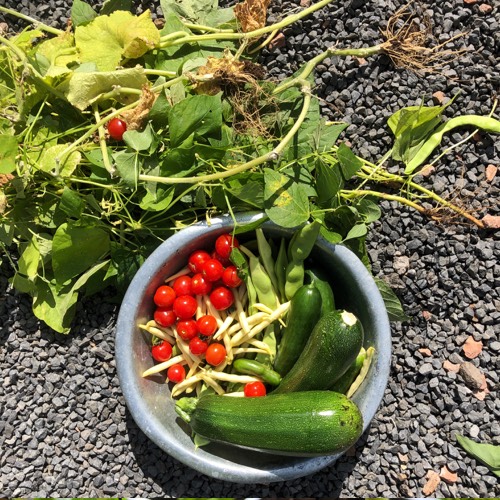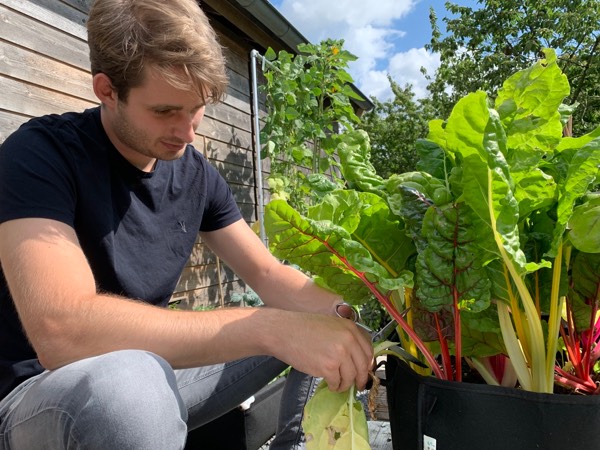- Get your vegetable garden ready for the new season
- Watering your vegetable garden
- Pruning tomatoes, cucumbers, and pumpkins
- How do you harvest zucchini?
- Perfect vegetable garden and perfect plants?
- Mid-February: can you start sowing now?
- End of May, early June: harvest and add nutrients
- Vacation and your vegetable garden
- July: tomatoes, cucumbers, and zucchini
- August: sowing for fall
- Early September sowing
- October sowing
- Which vegetables can handle cold weather?
- Get your vegetable garden ready for winter
- White lumps on the roots: good for your plants
- Help the birds this winter
- Get your vegetable garden ready for the new season
- Watering your vegetable garden
- Pruning tomatoes, cucumbers, and pumpkins
- How do you harvest zucchini?
- Perfect vegetable garden and perfect plants?
- Mid-February: can you start sowing now?
- End of May, early June: harvest and add nutrients
- Vacation and your vegetable garden
- July: tomatoes, cucumbers, and zucchini
- August: sowing for fall
- Early September sowing
- October sowing
- Which vegetables can handle cold weather?
- Get your vegetable garden ready for winter
- White lumps on the roots: good for your plants
- Help the birds this winter
Sowing in August for fall harvests

Back from vacation
I'll walk you through how I do it - and throw in some tips for this time of year. Because August is the month to freshen up your Planty Garden and get it ready for the fall.
Step 1: Harvest what you can harvest
You pick it off, show it off, and make a pot of soup. But by the time the soup is done, 4 more giant zucchinis have already taken its place. Sound familiar?

The same goes for beans. Big bunches of beans look great in photos. It's almost a shame to pick them. So you leave them there a bit longer. But they won't taste better the longer you leave them hanging. Just the opposite.

The key to growing a successful Planty Garden
Harvest as soon as you can and don't let the beans, zucchinis, cucumbers, and tomatoes get too big or overly ripe. They just take up space and won't taste their best.
Most importantly: harvesting when the plants are still young encourages them to produce new fruits. That means more delicious vegetables.
This won't happen if you harvest later. Because large fruits develop seeds. Seeds are offspring. Just like animals, the plants will put all their energy into taking care of those offspring.
So: harvest whatever is ripe. Don't wait.

What do you do with all that harvest?
Still overwhelmed by all your vegetables? You can invite your friends over for a fresh garden-to-table meal, make soups and sauces for the freezer, or give some away.
If you really want to make someone's day, you can even leave a free box with a sign on the roadside or take some to the food bank.
Step 2: Remove what you can remove

Read more about yellow leaves.
For potatoes and garlic, it's actually a sign that you can harvest.

Plants that give up
Just look at this cucumber: no idea what's wrong with it. His brothers and sisters are doing just fine.

It's all pretty normal for summer. And it doesn't really matter what the reason is: the important thing is that these plants won't recover. No matter how many times you check on them and hope for improvement, they won't bounce back.
It's better to just say goodbye and remove them. No regrets.
Step 3: Give your summer vegetables attention
Tomatoes
Tomaten
Cut off any leaves that are hanging in front of the tomato fruits. As long as you leave about 6-7 leaves on the plant, it will produce enough nutrients.

Read more about tomato blight.
Our cherry tomato is less susceptible to blight than other tomato varieties. It was bred for this purpose.
Bursting tomatoes
Make sure that the MM-Mix stays moist from top to bottom. If you let it dry out and then drench it with water, the ripe fruits will burst.

Eat or preserve cracked tomatoes as soon as possible. Cracked tomatoes tend to go bad more quickly.
Topping tomatoes
Tomato plants will continue to grow, but to harvest as many ripe tomatoes as possible, you should top them at the end of August. After that, your plant puts all its energy into ripening the tomatoes that are already there instead of creating new leaves and flowers.
Find the highest flowering stem that has green tomatoes growing on it. Then cut off the rest of the main stem above that.
It's best if you leave a leaf or 2 at the top of the plant.

Zucchinis and cucumbers
Courgettes en komkommers
And at least 1x per week, tie the stem of your zucchini plant to the trellis. It grows super fast in August, so if you don't tie it up, the stem may snap.

Why do zucchinis fall off when they're still small?
Sometimes zucchini, cucumber, and pumpkin fruits fall off before they even start to grow. Why is that and what can you do?
Read why that is and what you can do about it here.
Step 4: Keep your square patches fully stocked
Don't be too nervous about removing plants, even if you haven't harvested everything yet. As soon as I notice that the leaves of a head of lettuce are getting bitter, I pull the whole thing up and toss it in the compost.
I keep sowing lettuce (in other patches) so that I can continue to harvest. That's how I get the most out of my Planty Garden.

According to the app, you can sow all this:
- Endive
- Beet
- Chioggia beet
- Cos lettuce
- Marigold
- Cilantro
- Turnip
- Bibb lettuce
- Bok choi
- Carrot
- Purple carrot
- Dino kale
- Snow pea
- Lettuce
- Asian salad mix
- Radish
- Arugola
- Chard
- Spinach (starting mid-August)
- Purslane
- Winter lettuce

August in a nutshell
- harvest whatever you can
- remove whatever you can
- give your summer vegetables some extra attention
- sow again in your empty patches

Garden care
- Get your vegetable garden ready for the new season
- Watering your vegetable garden
- Pruning tomatoes, cucumbers, and pumpkins
- How do you harvest zucchini?
- Perfect vegetable garden and perfect plants?
- Mid-February: can you start sowing now?
- End of May, early June: harvest and add nutrients
- Vacation and your vegetable garden
- July: tomatoes, cucumbers, and zucchini
- August: sowing for fall
- Early September sowing
- October sowing
- Which vegetables can handle cold weather?
- Get your vegetable garden ready for winter
- White lumps on the roots: good for your plants
- Help the birds this winter